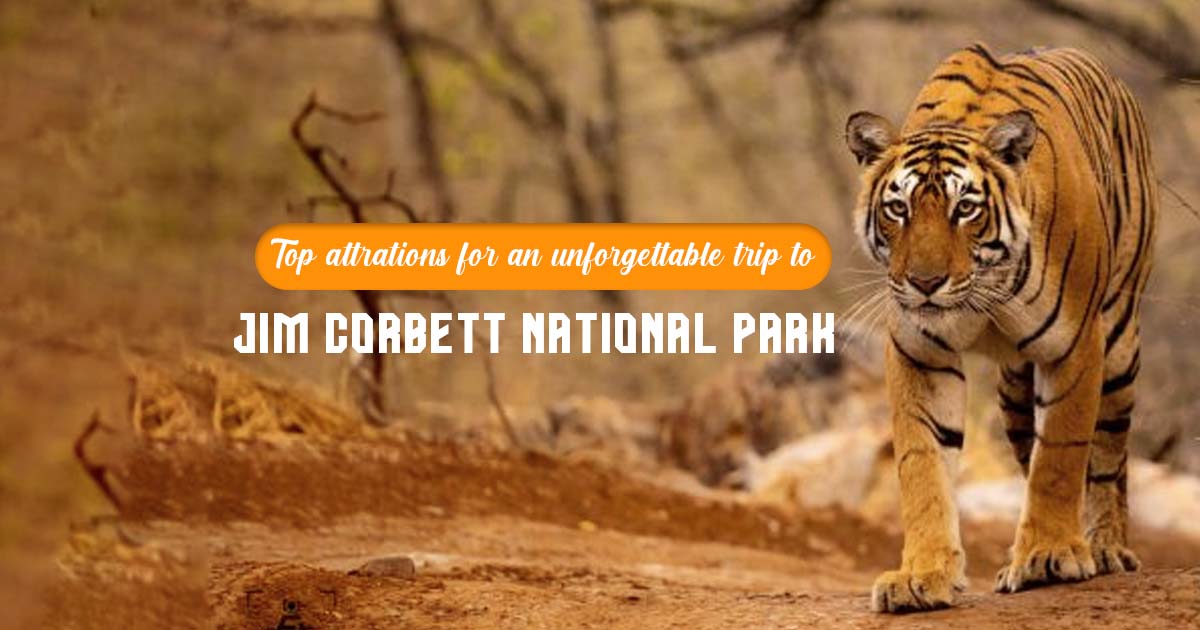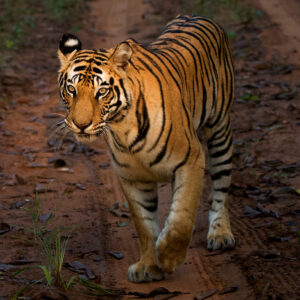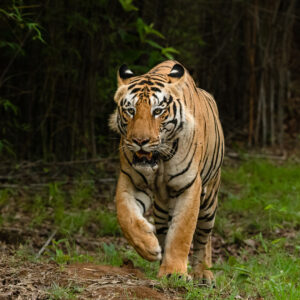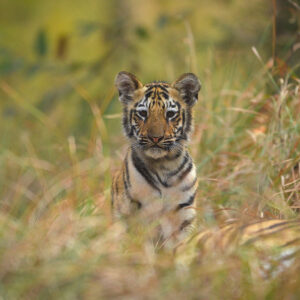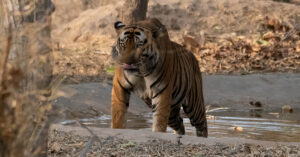In India’s picturesque state of Uttarakhand, the Jim Corbett National Park is a mesmerizing location noted for its abundant wildlife and unmatched natural beauty. If you visit this unique national park, you’re in for a beautiful adventure. Countless attractions and activities exist, from exhilarating wildlife safaris to serene nature walks. This blog post will explore the top attractions that make Jim Corbett National Park a must-see.
I. Wildlife Safari Adventures
Kickstart your adventure at Jim Corbett National Park with thrilling wildlife safaris. Start your day with a morning safari, venturing into the park during the early hours when the wilderness awakens. Witness the magical sight of the sun rising over the landscape as you navigate the park’s diverse ecosystems. Keep your eyes peeled for sightings of the park’s famous residents, including majestic tigers, elusive leopards, magnificent elephants, and many bird species.
As the day progresses, embark on an evening safari to further explore the park’s wildlife. Hop into an open jeep and traverse the park’s rugged terrain, accompanied by experienced guides who will navigate you through the park’s prime wildlife areas. You may get close to the animals on a Jeep safari, where you can watch them in action and learn about their natural environment.
For a unique and unforgettable experience, consider opting for an elephant safari. Traverse the park atop these gentle giants as they take you deep into the wilderness. Elephant safaris provide a different perspective, allowing you to explore the park quietly and have close encounters with wildlife while appreciating the bond between these majestic creatures and their mahouts.
II. Canyoning and River Rafting
Located along the Kosi River, Jim Corbett National Park offers thrilling water-based adventures for adrenaline enthusiasts. Engage in canyoning, a thrilling activity where you navigate through narrow canyons, rappel down cliffs, and plunge into pristine pools of water. As you go through the river’s bends and turns, discover its breathtaking beauty and become fully aware of nature’s unbridled force.
For those seeking more excitement, river rafting is an excellent choice. Brace yourself for an adrenaline-pumping experience as you conquer the rapids of the Kosi River. Feel the rush of the water and the thrill of navigating through the challenging sections while surrounded by the park’s scenic landscapes. You won’t miss the river at Jim Corbett National Park.
To ensure a secure and enjoyable trip, always heed the directions of qualified guides, put on the proper safety gear, and abide by the suggested principles.
III. Trekking and Hiking Trails
Various trekking and hiking trails are available in Jim Corbett National Park to satiate your wanderlust if you’re a nature lover who enjoys exploring new places on foot. Lace up your hiking boots and embark on an immersive journey through the park’s stunning landscapes.
One of the popular trekking trails in the park is the Dhikala Trek. The Dhikala Trek provides a unique opportunity to connect with nature and experience the untamed beauty of the park up close.
Another noteworthy trek is the Kalagarh Dam Trek. This trail not only treats you to awe-inspiring views of the Kalagarh Dam but also offers excellent opportunities for bird-watching. Keep your binoculars handy as you might spot vibrant avian species such as the great hornbill, Pallas’s fish eagle, and the red-headed vulture. The Kalagarh Dam Trek perfectly blends natural beauty and wildlife encounters.
When embarking on any trekking or hiking adventure, coming prepared is essential. Carry essentials such as sturdy footwear, comfortable clothing, insect repellent, sunscreen, and sufficient water. Always abide by park rules and regulations to lessen your environmental impact.
IV. Bird Watching and Photography
Jim Corbett National Park is a paradise for bird lovers and photography enthusiasts. The park provides many possibilities to see and photograph the captivating beauty of birds in their natural habitat, thanks to its wide variety of avian species. Take off on a bird-watching experience by grabbing your binoculars and camera.
The park boasts a rich birdlife, with over 600 species recorded. The park provides many possibilities to see and photograph birds in their natural habitat thanks to its wide variety of avian species. Take off on a bird-watching adventure by grabbing your binoculars and camera. Some of the bird species you may encounter include the crested serpent eagle, the Himalayan bulbul, the kingfisher, and the vibrant plumage of the Indian roller.
To enhance your bird-watching experience, explore the park’s best locations and times for bird sightings. Head to the park’s wetland areas, such as the Dhikala grasslands and the Ramganga River, where water-dependent birds thrive. Additionally, while birds are busily foraging and doing their daily tasks, early mornings and late afternoons are typically the ideal times to see them.
When capturing photographs of birds, patience is vital. Find a comfortable spot, remain quiet and still, and observe the behavior of the birds. Be prepared to capture their graceful flights, intricate plumage, and interesting behaviors. Respect the wildlife and maintain a safe distance to ensure their well-being.
V. Nature Walks and Jungle Camping
For those seeking a more immersive experience in nature, Jim Corbett National Park offers guided nature walks that allow you to delve deeper into its enchanting ecosystems. Accompanied by knowledgeable guides, these walks provide insights into the park’s flora and fauna, highlighting the intricate connections that sustain life.
As you wander the park, you’ll witness various plant species, from towering trees to vibrant flowers and lush greenery. The guides will share their expertise, highlighting interesting facts about the park’s vegetation, such as medicinal plants and their traditional uses.
In addition to nature walks, camping within the park or surrounding areas is an excellent way to connect with the wilderness. Many campgrounds provide:
- Comfortable overnight options.
- Ranging from cottages to tents.
- Letting you completely take in the sights and sounds of the forest.
Spend your nights listening to nature’s symphony under a sky filled with stars, and awaken to the tranquil sounds of birds.
Jungle camping provides an unparalleled experience of being one with nature. Listen to the nocturnal creatures as the night falls and witness the sky adorned with countless stars.
A Corbett Waterfall and Garjia Temple
While exploring Jim Corbett National Park, don’t miss the chance to visit its nearby attractions. One of the must-see spots is the Corbett Waterfall, located amidst lush greenery. This picturesque cascade offers a tranquil and refreshing ambiance, providing a perfect respite from the heat. Stroll to the waterfall, take in the calming sound of the water rushing down, and enjoy the crisp mountain air.
If you’re feeling adventurous, you can even dip in the calm waters of the waterfall.
Adjacent to the waterfall is the Garjia Temple, a significant religious and cultural landmark. Situated atop a large rock amid the Kosi River, the temple is dedicated to the Goddess Garjia. Visit this spiritual site to seek blessings and witness the fusion of nature and spirituality. The temple is an excellent location for photographers since it provides panoramic views of the surroundings.
Hire a local taxi or public transportation to reach the Corbett Waterfall and Garjia Temple. Check the visiting hours and respect the religious customs when entering the temple premises.
 Dhikala Zone and Canter Safari
Venture into the Dhikala Zone, one of the prime areas within Jim Corbett National Park, known for its unique ecosystem and abundant wildlife. Tigers, elephants, deer, and many bird species are among the animals that call the Dhikala Zone home.
To explore the Dhikala Zone, consider opting for a canter safari. Canter safaris are ideal for larger groups as they accommodate a more significant number of people. Hop aboard the canter and embark on an exciting journey through the park’s wilderness. The center will take you along designated routes, increasing your chances of spotting wildlife in their natural habitat.
As you traverse the Dhikala Zone, keep your camera ready to capture unforgettable moments. From the regal stride of a tiger to the playful antics of a herd of elephants, the canter safari offers ample opportunities to witness and photograph the park’s majestic wildlife.
VIII. Angling and Fishing
For fishing enthusiasts, Jim Corbett National Park provides an opportunity to indulge in angling. The park’s rivers and streams are home to various fish species, making it the ideal location for anglers to practice their skills and unwind while fishing.
Before engaging in angling activities, following the park’s guidelines and regulations is essential. Obtain the necessary permits and licenses, and adhere to catch-and-release practices to ensure the conservation of fish populations. Fishing responsibly helps maintain the ecological balance and sustains the park’s aquatic ecosystems for future generations.
Visit to Corbett Museum
A trip to the Corbett Museum is strongly advised to understand better the park’s history and its importance in wildlife protection. The museum honors Jim Corbett, a well-known British-Indian hunter, novelist, and conservationist who was instrumental in creating the national park.
Corbett’s life, his expeditions, and his contributions to wildlife conservation are highlighted in the museum’s displays of exhibits and memorabilia. Explore the displays of photographs, documents, and personal belongings that provide insights into his experiences and his love for nature.
Visiting the Corbett Museum is informative and an opportunity to pay homage to the legacy of Jim Corbett and gain inspiration to contribute to wildlife conservation.
Cultural Exploration: Local Villages and Tribal Communities
Beyond its natural wonders, Jim Corbett National Park offers an opportunity to immerse yourself in the vibrant culture of the local communities. Interact with the native people and tribal communities close to the park to learn about their particular way of life, traditions, and customs.
Engage in cultural exchanges by participating in local activities and celebrations. Learn traditional arts and crafts, try cooking regional delicacies, or engage in folk dances and music. These interactions connect deeply to the local culture and foster mutual understanding and appreciation.
Purchase their handicrafts and traditional products, which serve as souvenirs and help preserve traditional craftsmanship and provide livelihood opportunities to the local communities.
A Spa and Wellness Retreats
After indulging in thrilling adventures and exploring the park’s wonders, take some time to rejuvenate your body and mind at one of the spa and wellness retreats in and around Jim Corbett National Park. These serene retreats offer a range of treatments and therapies designed to relax and revitalize your senses.
Pamper yourself with soothing massages, body treatments, and aromatherapy sessions incorporating natural ingredients and ancient healing techniques. Engage in yoga and meditation sessions amidst the tranquil surroundings, allowing yourself to find inner peace and harmony.
A spa and wellness retreat is ideal for relaxing and harmonizing with the park’s peaceful atmosphere. Embrace the healing powers of nature and experience true relaxation amidst the breathtaking landscapes.
A Wildlife Conservation and Ecotourism Initiatives
As you explore Jim Corbett National Park, it’s essential to appreciate the park’s conservation efforts and support ecotourism initiatives. Learn about the ongoing conservation projects and initiatives to protect the park’s wildlife and habitats. Understand the challenges faced in conservation, such as human-wildlife conflict and habitat degradation, and explore how responsible tourism practices can contribute to preserving this natural treasure.
Protect wildlife and their habitats, abide by park policies, and leave as little ecological footprint as possible. Follow sustainable practices such as waste management, avoiding single-use plastics, and conserving water and energy. You can support the park’s conservation objectives and maintain its long-term sustainability by acting responsibly as a visitor.
A Accommodation Options in Jim Corbett National Park
When planning your Jim Corbett National Park trip, consider the various accommodation options within and around the park. There are accommodations to fit every traveler’s preferences and budget, including opulent resorts, cozy lodges, and comfy campsites.
Luxury resorts within the park offer a blend of comfort and nature, providing an immersive experience with spacious rooms, modern amenities, and stunning views of the surroundings. Cozy lodges offer a more rustic ambiance, allowing you to connect closely with nature without compromising basic comforts. Campsites provide a unique experience of staying amidst the wilderness, offering tents and facilities for a memorable outdoor adventure.
Consider location, closeness to park gates, accessibility, and amenities available while selecting your lodging. It’s advisable to book your accommodation well in advance, especially during peak tourist seasons, to ensure availability and a seamless trip.
A Best Time to Visit and Duration of Stay
It’s crucial to schedule your visit to Jim Corbett National Park during the optimum time of year.
Jim Corbett National Park experiences distinct seasons influencing wildlife sightings and the park experience. The best times to visit the park are spring (March to June) and winter (November to February). These times of year have pleasant weather and more frequent wildlife observations.
Heavy rainfall occurs throughout the monsoon season (July to September), and certain park areas might be closed for your protection. However, the lush greenery and the park’s rejuvenation during this time offer nature enthusiasts a unique and refreshing ambiance.
The number of sites and activities you want to experience will determine how long your visit will be. To fully explore the park and engage in various activities, a minimum of
Three to four days are recommended. This allows ample time for wildlife safaris, trekking, bird watching, and relaxation, ensuring a well-rounded and fulfilling experience.
Frequently asked questions about visiting Jim Corbett National Park.
1. What is the entry fee for Jim Corbett National Park?
– The entry fee varies based on the category of visitors (Indian or foreigner), the type of safari, and the zones you plan to visit. It’s advisable to check the official website or contact the park authorities for the latest fee structure.
3. Can I spot a tiger during the safari?
– Jim Corbett National Park is known for its tiger population, but tiger sightings cannot be guaranteed. Tigers are elusive creatures, and their sightings depend on various factors, such as their natural behavior and the timing and duration of your safari. However, the park’s rich biodiversity ensures every safari is a unique and rewarding experience.
6. Can I bring my vehicle for safari?
– Private vehicles are not allowed for safaris inside Jim Corbett National Park. The park provides authorized vehicles and experienced guides for safari experiences. Jeep safaris and canter safaris are the recommended modes of transportation for exploring the park.
7. Are there any age restrictions for certain activities?
– Some activities within the park, such as elephant safaris, may have age restrictions for safety reasons. It’s advisable to check with the park authorities or tour operators regarding age restrictions and suitability for specific activities.
Jim Corbett National Park offers a remarkable journey into the heart of nature, where adventure, wildlife, and serenity converge. Whether exploring the park’s wildlife on thrilling safaris, immersing yourself in its natural beauty through treks and nature walks, or indulging in cultural exchanges and relaxation, the park promises an unforgettable experience.
By being a responsible traveler and supporting the park’s conservation efforts, you contribute to preserving this ecological gem. Remember to respect wildlife, follow park regulations, and engage in sustainable practices to ensure that future generations can continue to enjoy the wonders of Jim Corbett National Park.
Plan your trip wisely, soak in the splendor of the park’s attractions, and create cherished memories that will last a lifetime. Jim Corbett National Park awaits, ready to enchant you with its breathtaking landscapes and remarkable wildlife encounters.


